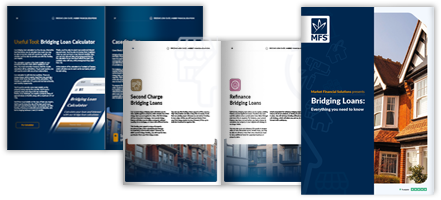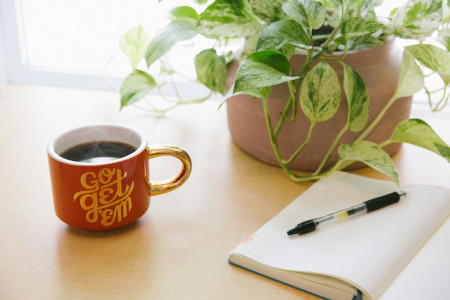Disclaimer
Market Financial Solutions are a bridging loan and buy-to-let mortgage provider, not financial advisors. Therefore, Investors are encouraged to seek professional advice. The information in this content is correct at time of writing.

Investors and homebuyers have several options available to them in the property world. But, arguably, one preliminary choice affects all the others that follow.
Should they invest in freehold, or leasehold property? There are pros and cons to both, and if investors opt for a leasehold property, they’ll then likely need to decide whether to go for long, or short term leases.
Fortunately, both long and short lease bridging loans are available for property investors, as are many other specialist finance products. Before putting them to use however, investors should probably refresh themselves on the basics, while also getting up to speed on what’s going on in the market.
What are the differences between a leasehold and freehold property?
Generally, the owner of a freehold property owns the building outright, along with the land it’s on. These owners are known as freeholders, and they’re responsible for maintaining their properties and lands[1].
Leaseholders will own (occupy may be a more accurate word) a property for a set number of years, but will not own the land. They will purchase the lease from the freeholder, who will take back control of the property at the end of the lease, unless it’s extended.
Leases can vary in length. They can range from 99 years, to 125 years, or even go as high as 999 years[2]. The latter, arguably, being effectively a freehold due to the length involved. Any lease less than 80 years is considered a short term lease[3], and investors may require a short lease bridging loan for these types of assets.
Why should investors consider leaseholds?
While there may be less control with leasehold properties, they can present a number of advantages for buyers and/or investors. They tend to be cheaper than freehold properties, and much of the admin of taking care of the property will likely fall on the freeholder.
Also, given the lower entry costs, higher rental yields/returns may be available. Leasehold property owners/landlords may be able to generate a significantly higher return on their investments than freehold properties, to the tune of around 15-20% per year[4].
It may be harder to generate these kinds of returns with a short lease property. But, they may provide opportunity for investors seeking out high risk, high reward strategies. The lure of attractive profit margins can attract risk-tolerant investors willing to take a chance and receive income that equates to a multiple of the underlying purchase price[5].
Also, for investors whose circumstances match the leasehold market, there are plenty of opportunities available. Most flats in the UK will likely be leasehold[6]. And, according to recent analysis from the ONS[7], around 60% of let properties in the UK are either converted flats, or purpose-built flats. There are more flats being rented out by landlords than terraced properties, semi-detached houses, or detached homes.

Why should investors care about keeping on top of their lease strategies, or short lease bridging loans?
The leasehold market is under intense scrutiny. Leasehold reform is on the way for England and Wales, with the Leasehold and Freehold Bill 2023-24 currently being reviewed by the House of Lords[8].
The Bill’s main provisions would:
- make it cheaper and easier for leaseholders in houses and flats to extend their lease and buy the freehold.
- increase the standard lease extension term to 990 years, with ground rent reduced to a peppercorn (zero financial value), upon payment of a premium.
- change the qualifying criteria to give more leaseholders the right to extend their lease, buy their freehold and take over management of their building.
- ban the granting of new leasehold houses (with some exceptions).
- improve the transparency of service charges and ensure leaseholders receive key information on a regular basis.
- give leaseholders a new right to request information about service charges and the management of their building.
- improve the transparency of administration charges and buildings insurance commissions.
- ensure leaseholders are not subject to any unjustified legal costs and can claim their own legal costs from their freeholder.
- give freehold homeowners who pay charges for the maintenance of communal areas and facilities on a private or mixed-tenure residential estate the right to 1) challenge the reasonableness of charges and standard of services provided; and 2) apply to the tribunal to appoint a substitute manager where their estate management company is failing.
- improve the transparency of estate charges and give freehold homeowners access to redress schemes.
- ensure that relevant property sales information is provided to leaseholders and freeholders on estates in a timely manner.
- ensure a rentcharge owner is not able to take possession or grant a lease on a freehold property where the rentcharge remains unpaid for a short period of time.
- strengthen the leaseholder protections in the Building Safety Act 2022.
The Conservatives have had leasehold reform on the agenda since their 2019 manifesto[9], and Michael Gove has been pushing for change for several months. But, it looks like the Housing Secretary is now u-turning on several promises made[10].
Although, this may not make much of a difference over the coming months. A general election is expected to take place by the second half of 2024[11]. And, according to the polls, we’re likely to see a Labour government come to power by the end of the year[12]. On this, Labour has vowed to commit to “comprehensive leasehold reform[13]” should it win.
Short lease bridging loans with Market Financial Solutions
While its unclear how all these promises and plans may play out, one thing is for certain. The leasehold scene can be shifted at unexpected times, by factors outside of an investor’s control.
To keep up with all the potential rule changes, borrowers will want to work with short lease bridging loan providers who have experience with adapting to changing legislation, and remaining flexible in the face of challenges. This is especially the case with short lease properties, as many mainstream lenders may be unwilling to provide mortgages for these assets[14].
At Market Financial Solutions, our bridging loans can accommodate investments in short leases. Our residential bridging loans can be used for leases of 30 years and up and adjusted to investors’ individual circumstances.
Of course, every short lease bridging loan case we deal with will be different. The funding we provide is tailored to every individual investor’s circumstances. For any property investor who is unsure of whether we can support their plans – our phonelines are open. Get in touch today.
The Complete Guide to
Bridging Loans
Everything you need to know
- Different bridging types
- Useful tools
- Apply them in real life
- Market insights & more
[1] https://www.moneyhelper.org.uk/en/homes/buying-a-home/leasehold-vs-freehold-whats-the-difference
[2] https://www.unbiased.co.uk/discover/mortgages-property/ownership-improvements/leasehold-vs-freehold-what-s-the-difference
[3] https://hoa.org.uk/advice/guides-for-homeowners/i-am-buying/buying-a-flat-with-a-short-lease/
[4] https://www.thepropertysourcingcompany.co.uk/guides-tips/leasehold-property-can-i-rent-it-out/
[5] https://julietwist.co.uk/property-blog/what-is-a-short-lease-property-and-should-you-buy-one/#:~:text=Short%2Dlease%20flats%20can%20also,on%20a%20short%2Dlease%20property
[6] https://bestgapp.co.uk/news/buying-a-leasehold-property-2/#:~:text=If%20you%20buy%20a%20leasehold,the%20freeholder%20owns%20the%20building.
[7] https://www.gov.uk/government/statistics/english-private-landlord-survey-2021-main-report/english-private-landlord-survey-2021-main-report–2#:~:text=2.4%20Terraced%20properties%20were%20the,(4%25)%2C%20Figure%202.1
[8] https://commonslibrary.parliament.uk/leasehold-reform-in-england-and-wales/
[9] https://inews.co.uk/news/leasehold-reform-delays-michael-gove-lobbyists-2976308
[10] https://news.sky.com/story/michael-gove-attacked-by-labour-tory-mps-and-boris-johnson-allies-over-leasehold-u-turns-13102950
[11] https://www.independent.co.uk/news/uk/politics/general-next-election-date-may-sunak-b2508673.html
[12] https://www.thetimes.co.uk/article/general-election-poll-tory-mp-party-cabinet-seats-6ktnbkt7b
[13] https://www.theguardian.com/politics/2024/mar/24/tories-ditching-manifesto-pledge-remove-ground-rents
[14] https://www.moneysavingexpert.com/mortgages/what-is-a-leasehold/





